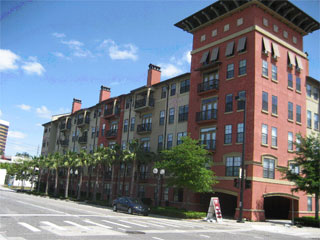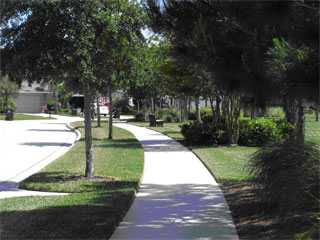|
|
Factors that Influence Our Perception of Density Urban design plays a large part in visual perception of density. In urban settings, space is maximized by "building up" land uses vertically. How a building is designed may matter more than the density in judging its compatibility with its surroundings. Building forms, proportions, finish materials, massing and the general appearance of facades (the building's faces), as well as available shade and other sidewalk amenities, affect a development's character and the pedestrian's or neighbor's experience. Such details may shape how we feel about a structure or development. The building's parking also is a factor, in that having too much or too little parking affects how a building is used and viewed by the public. Living spaces, gardens, and outdoor recreation areas require natural daylight, but parking does not. Some developments incorporate parking below, within or behind the various structures, dedicate the visible areas to retail, recreation, and other amenities that benefit from interaction and make the street level more active.  For the streetscape, establishing a tree canopy, or an awning or colonnade system, is a highly effective way to improve the physical quality of a neighborhood street, and some would say it is the most effective way to do so. Street trees and shrubs reduce noise from busy streets and other activities, enhance views, and provide privacy for a building's occupants. Tree lined-streets, parks, gardens, waterfronts and other open spaces provide a connection to the natural world. This green infrastructure should consist of a variety of spaces and should thread through the site to let residents, pedestrians and shoppers enjoy access to it and its many benefits. The amount of open space has a direct effect on neighborhood-wide residential density, but also provides important recreation and stormwater management benefits to neighborhoods. Accessible and attractive green infrastructure is a core measure of quality of life and central to a healthy lifestyle. Higher densities in neighborhoods, by virtue of bringing more households closer together, also can provide a more attractive setting for businesses. These more compact and higher density neighborhoods also encourage walking to these businesses, providing choices, amenities, and opportunities for interaction with neighbors. |
|